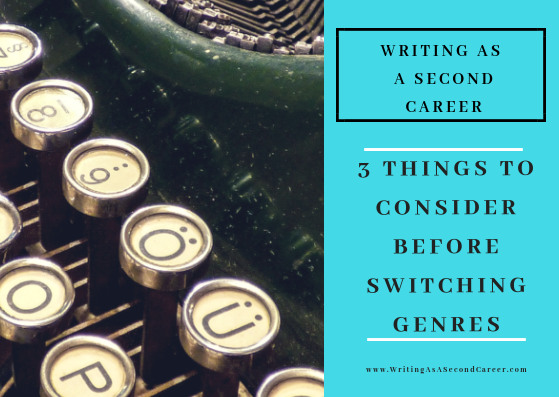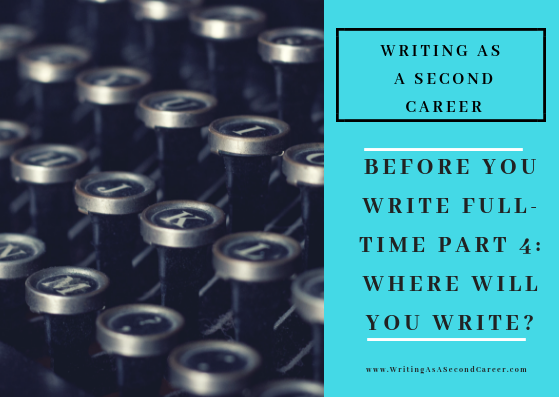Though it’s not quite the end of 2018, today I looked at what I spent on advertising my novels and non-fiction books over the past year.
My goal was to set a 2019 budget as well as to figure out how to spend less and earn more.
Where The Advertising Dollars Went
My yearly spending broke out as follows:
- 43% e-Newsletters (BookBub, Fussy Librarian, etc.)
- 22% Goodreads (ads and giveaways)
- 16% Facebook Ads
- 14.5% Amazon Ads
- 2% My own email lists
- 1.5% Other (in-person book fairs, promotional copies)
My royalties totaled almost 2 times what I spent on advertising. If I thought the ads generated those sales, I’d think that was well worth it. Who wouldn’t spend $1 to earn $2?
I’d also double it if I knew for sure what was working and felt confident I’d earn twice as much.
But I’m fairly sure some of these advertising dollars resulted in next to no sales.
Dropping From The 2019 Spending Plan
There is some value to new potential readers just seeing my book covers and tag lines more often, so I don’t feel any of my advertising dollars were wasted. And I learned a lot, as I wanted to experiment with new platforms if only to rule them out.
Here are the areas, however, where I don’t plan to spend in 2019:
Goodreads
In previous years I always had Goodreads self-serve ads running. While I couldn’t be positive they generated sales, my click-through rate for my Awakening series ads was usually 5% or 6%, which is very good. And when the ads stopped running because the funds ran out, I typically saw dips in sales.
This year, though, not only did my ads for my new suspense/mystery series (the Q.C. Davis novels) not get any clicks, the ads for my Awakening series also stopped getting clicks.

 Unfortunately, self-serve ads need to be funded in advance.
Unfortunately, self-serve ads need to be funded in advance.
I typically put $70-$80 at a time on my credit card and let the ads run and use those funds. I renewed the Awakening ad campaign and started the Q.C. Davis campaign at the same time a few months ago. As most ads have gotten no clicks since then, almost all that money sits waiting to be spent.
So far as I know, I can’t get a refund (though I may check into that). Right now I plan to keep experimenting with different ads to see if I can get anything to take hold, but I won’t be adding any funds.
Goodreads also switched this year from allowing authors to conduct free book giveaways for paperbacks to charging hundreds of dollars for giveaways.
While I may have gotten a review or two from both paid giveaways I tried (one paperback and one Kindle), the cost seemed too high to me for the benefit.
I experimented with Facebook ads during much of 2018. When I advertised the audiobook edition of The Awakening, that got the fewest clicks.
My best results were for Kobo in Canada for The Awakening, Book 1. But by results, I mean the click-through rate on the ads, not necessarily sales. I did see a little bit of a spike in sales but it wasn’t clear it came from Facebook versus other ads running at the same time.
Also, as I’d been warned, it’s easy for Facebook ads to use of a lot of your funds very quickly.
I haven’t ruled out trying Facebook again sometime in the future. But for 2019 I think I will skip it in favor of focusing more on the platforms in the next section.
Planned 2019 Spending
Amazon Ads
Not all my Amazon ads have done well, but most of them have an average cost of sale well below the royalty I earn. (Amazon’s dashboard calculates this figure for you and shows you the sales from each ad.)
Because the ads are generating more royalties than they cost and because it’s fairly easy to tell what works and what doesn’t, I plan to keep spending on Amazon ads. I’m aiming to fine tune and increase spending on those books and ads that are doing well.
BookBub Ads
By BookBub ads, I mean the ones you create yourself and that you pay for based on either the number of impressions or the number of clicks, not the BookBub Featured Deals. (With the latter, BookBub accepts your book or not and charges a flat fee.)

I only started spending on BookBub ads this month, so they are not in the percentages above.
While I’m uncertain if I’m coming out ahead with them, each day I’m able to see clicks for each ad. Based on increased free downloads of The Awakening, particularly on Google Play, I believe the ads are effective.
Also, because there is so much data, I feel confident I’ll be able to tell going forward which ads are working and which aren’t.
Finally, BookBub offers good options to tailor the ads. For instance, if you’re getting a low click-through rate on Kobo in Australia, you can turn off just that platform and country and leave the ad running for other platforms and regions.
Email List
I handle my writing email lists through MailChimp. The dollars spent on it are well worth it. I see the largest spike in sales when I send out emails to my lists.
In 2019, I plan to do more to provide value to subscribers and to draw in new ones.
E-Newsletters
I spent the most on e-newsletters. As a whole, I don’t think it was worth it. For quite a few I paid $40-$60 and saw only 10 or 20 additional sales, if that.
On the other hand, some were very effective. I spent over a hundred dollars on a BookBub Featured Deal for three countries. That deal earned me the money back in a day and generated a profit.
I also like Fussy Librarian because it includes an Audible link along with ebook links, making it one of the only ways to advertise audiobooks.
Part of my challenge this year is that I spent the most on e-newsletter ads for The Worried Man, the first book in my Q.C. Davis mystery/suspense series. But I defaulted to e-newsletters that worked well for my Awakening supernatural thriller series, which may not be the same ones that draw mystery/suspense readers.
I plan to try e-newsletters again next year. But I am going to set a budget so that I don’t spend as much.
Also, I plan to try one at a time when I’m running no other promotions so I can be more certain whether the e-newsletter is generating the sales.
The Year As A Whole
Through the year I felt disappointed with my advertising expenses and royalty income. The first was up and the second down.
Looking back on the year, though, I feel better.
I did spend more than last year on advertising, and some of that money didn’t result in sales. But I feel like I needed to try different platforms and track results to find out what works and what doesn’t. As I did so, I learned a lot about which tag lines and images resonate with people. Also what readers are most interested in my books.
As far as the royalties drop, it didn’t turn out to be as much as I feared. And I feel more hopeful that next year I’ll do better with what I’ve learned about ads. (I’m also hoping not to spend a lot of time recovering from breaking any bones, so cross your fingers for me that 2019 will be injury-free.)
That’s all for today. Until next week (and year)–
L.M. Lilly
P.S. If you’re free January 1 from noon to 2 p.m. U.S. central time stop by the Writing As A Second Career Facebook page. I’ll be sharing 2019 writing goals and plans and would love it if you’d join me and do the same. (Or just read, that’s OK too.)










 I love my desk, shown along the wall in this photo, but it’s far too high to place my keyboard on.
I love my desk, shown along the wall in this photo, but it’s far too high to place my keyboard on.



